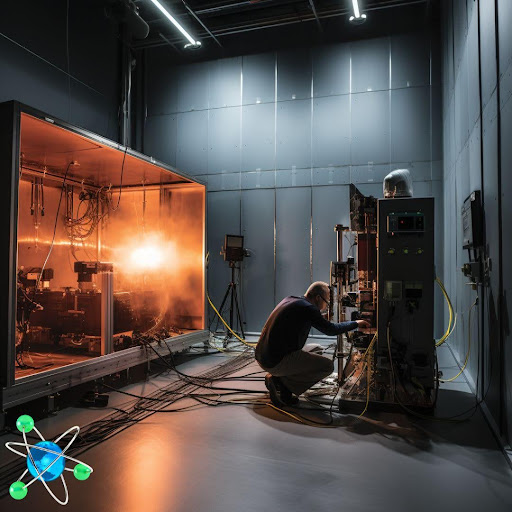
- Innovative Fuel Technology: Westinghouse, with support from national laboratories and DOE funding, has developed advanced nuclear fuel technology aimed at extending the operational cycle of nuclear power plants from 18 to 24 months.
- Economic and Operational Benefits: The extended cycle length not only reduces refueling outages, resulting in significant cost savings, but also increases electrical output. This innovation has the potential to be economically transformative, akin to adding new reactors to the existing fleet in the United States.
- Rigorous Testing at INL: The Idaho National Laboratory plays a crucial role in testing the new fuel technology, subjecting it to analyses, safety tests, and simulations under both normal and postulated accident conditions. This research is essential for gaining approval from the US Nuclear Regulatory Commission for deployment in commercial reactors worldwide.
In a pivotal development for the nuclear energy sector, a recent shipment has arrived at the Idaho National Laboratory (INL), carrying both Accident Tolerant Fuel (ATF) and high burnup fuel. This marks the first instance of such a shipment for testing at INL in two decades.
Crafted by Westinghouse, with technical contributions from various national laboratories, including INL, and supported by funding from the US Department of Energy (DOE), this novel fuel technology is engineered for prolonged usage. Its primary objective is to extend the operational cycle of nuclear power plants from the current 18 months to an extended period of 24 months. This extension not only diminishes the frequency of refueling outages but also promises substantial cost savings for customers. Furthermore, the technology is anticipated to generate less spent nuclear fuel and enhance a nuclear power plant’s resilience under potential accident conditions.
According to Daniel Wachs, the national technical director of DOE’s Advanced Fuels Campaign, the economic benefits could be monumental. The increased cycle length, eliminating one refueling outage every six years, is expected to significantly boost electrical output. Wachs envisions this increase in electrical output as equivalent to adding new reactors to the existing fleet in the United States.
Before this advanced fuel technology can be deployed in commercial reactors, an exhaustive examination and analysis are imperative. Researchers are tasked with assessing its performance under standard operating conditions, conducting additional experiments to gauge responses during postulated accident conditions, and demonstrating behavior during storage and recycling. This comprehensive dataset will serve as the basis for establishing safety criteria required by the US Nuclear Regulatory Commission for the qualified use of the fuel in US nuclear power plants.
Tarik Choho, Westinghouse President of Nuclear Fuel, emphasizes the role of continuous innovation in enhancing the nuclear sector’s reliability, particularly in a time of escalating energy demand.
The INL’s Materials and Fuels Complex will be the site for the analysis and testing of the fuel. Rigorous safety tests, simulating power excursions or loss-of-cooling events, will be conducted in a controlled environment to push the fuel to its limits. Additionally, the Advanced Test Reactor at INL is being prepared to accommodate fuels for endurance tests that replicate the wear and tear experienced over a decade of service in a commercial reactor but in a fraction of the time.
John Wagner, the Director of INL, views the receipt of these fuel rods as a significant milestone, highlighting the laboratory’s unique facilities, capabilities, and expertise in nuclear energy research and development. He also underscores the state of Idaho’s reinstatement of the Department of Energy’s capacity to receive commercial spent nuclear fuel for research and development, portraying a renewed commitment to advancing nuclear energy research.
This groundbreaking fuel technology has also been delivered for testing at Oak Ridge National Laboratory in Tennessee. The research conducted on this fuel is not only valuable for US regulators and agencies but is poised to contribute essential data to international partners and regulatory bodies. Westinghouse asserts that the advanced testing and post-irradiation examinations at both laboratories are crucial milestones for obtaining final approval from the Nuclear Regulatory Commission to deploy this innovative fuel in commercial reactors worldwide.
